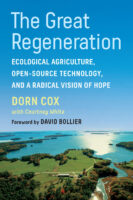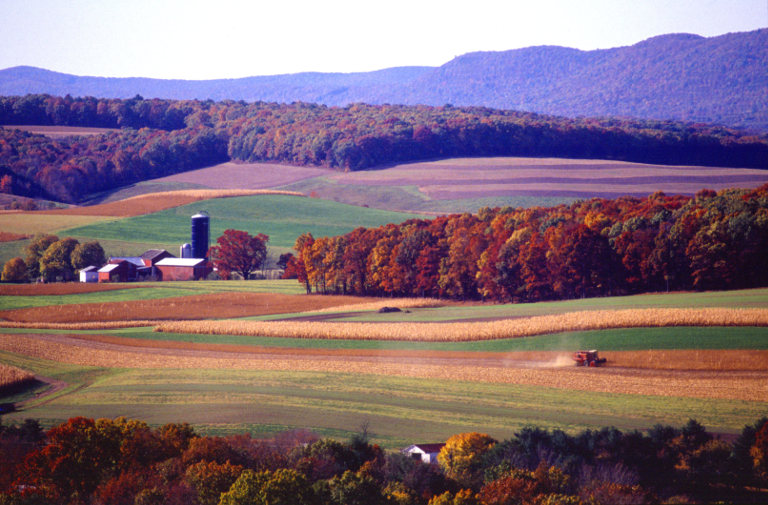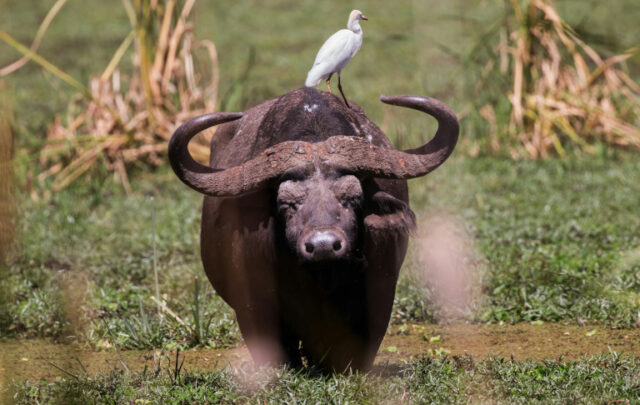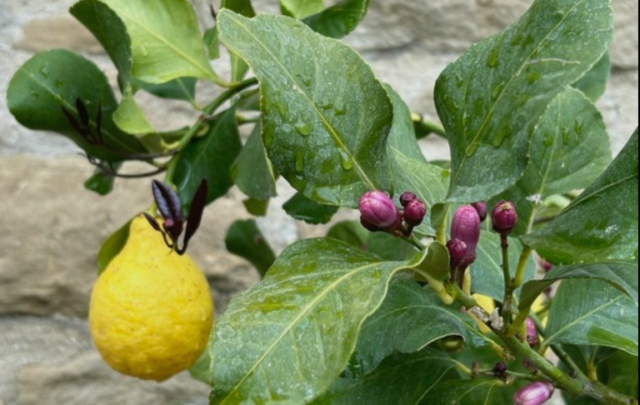 Ed. note: This excerpt from The Great Regeneration by Dorn Cox and published by Chelsea Green Publishing, is posted on Resilience.org with permission of the publishers.
Ed. note: This excerpt from The Great Regeneration by Dorn Cox and published by Chelsea Green Publishing, is posted on Resilience.org with permission of the publishers.
Our Commonwealth of Knowledge
The goal of an encyclopedia is to assemble all the knowledge scattered on the surface of the Earth, to demonstrate the general system to the people with whom we live, & to transmit it to the people who will come after us, so that the works of centuries past is not useless to the centuries which follow, that our descendants, by becoming more learned, may become more virtuous & happier, & that we do not die without having merited being part of the human race.—Denis Diderot, Encyclopédie (1751)
When the morning sun emerges on the horizon we can see a few minutes into the future. Physics provides an elegant explanation—the atmosphere refracts light over the horizon in such a way that we see the sun shortly before it is actually in our line of sight. The physics is the same whether we’re standing in a field in Nebraska or Malawi, but it becomes clearer if we head over to the local airfield and fly up to 10,000 feet. There, the horizon exposes the long curvature of the Earth stretching out ahead, allowing us to experience the same effect from a higher perspective. Even as the expanse of our view extends, we can also see that more is hidden just over the horizon. We gain context from a new point of view. If we were to ascend to 90,000 feet, above the operating altitude of most private aircraft, the shape of the Earth and the atmosphere both become visible, the latter as a thin layer of gasses blanketing our life-sustaining biosphere, held in balance by life on Earth. We can see now that a fragile boundary between space and Earth gives us our distinct blue sky, which is made possible by our planet’s unique position in the solar system. While looking out across the arch of the receding horizon, we can descend again and pivot to look out and down from the side window of the plane, down to the fields 10,000 feet below. The details of the plants visible at ground level blur into patterns of color that can be read almost like pixels in a larger palette of greens and soil tones that create even larger patterns in a shifting mosaic of life overlaid on a landscape of ridges, valleys, and rivers.
The vision isn’t static. The full story of the terrestrial surface of the Earth involves the breathing of the land into the biosphere, which reflects and refracts bandwidths of visible color to our eyes. To better understand this story, we need to fly back down to inspect the details that make up the patterns within the forests, rivers, ridges, and fields. We must travel deeper into the fields and zoom down below the surface of the ground and into the soils and plant roots, where hidden metropolises of bacteria and fungi thrive. It is in these living, breathing spaces between broken rock, sand, silt, and clay that fungal communication networks transport messages and nutrients underground among plants across vast distances. If we take a handful of rich soil dug in a Malawi garden, for example, and place it under a simple digital microscope linked to the screen on our phone, we can observe the billions upon billions of microbes that tell a story that takes us back in time to the origins of life on Earth. When we take a sample of those microbes and analyze them in the field with a stapler-sized USB connected DNA sequencer, we can look even deeper using a near-instant genetic analysis of this living microbiome. The DNA structures of these most basic microbes invite us to explore the shared architecture of all life forms and to contemplate the evolutionary processes that propel life toward ever-increasing diversity and complexity.
I have had the privilege of using these tools in fields on my own farm. You may be wondering what astrophysics and genomics have to do with agriculture? Isn’t agriculture just a business, something that farmers and ranchers do rather mechanically to produce food, fiber, and fuel from their land? Farming isn’t rocket science, right? No, it’s more complicated! I propose that our understanding of agriculture must include and expand beyond the highly complex history of our interaction with microbes and our vast transformation of the biosphere through our actions to produce food, fiber, and fuel. However, I would also suggest that agriculture and its outcomes have always been a quantifiable measure of our success or failure as a species to use our collective knowledge of nature to overcome scarcity by harnessing the life around us to create abundance where it wasn’t before. Agriculture is sociology, technology, economics, physics, chemistry, biology, and history—all rolled into one.
By taking a longer view, we can see the arc of the horizon of our agricultural past, which gives us the ability to put our endeavors in context and to see what’s possible for the future just over the horizon. By using new tools of scientific collaboration, from genomics to microscopes, satellites, and radio telescopes, we can create order within these levels of perspective. We can combine what we see with our own eyes at ground level with the pixilated patterns produced by satellites and microscopes, resolving images into sharper focus as we move closer or farther away—looking both forward and backward in time. Our tools, once in the realm of science fiction, are now equivalent to an extraordinarily powerful zoom lens accessible to all of us—and we are just beginning to learn where and how to focus our lens and what to do with the knowledge our powerful new observational capacities provide. In just the last decades we have begun to explore the boundaries of these new powers to learn if we can indeed take collective action to stop planetary degradation, counter scarcity, and instead use these tools to help us move toward regeneration and abundance.
Teaser photo credit: Farming near Klingerstown, Pennsylvania. Public Domain, https://commons.wikimedia.org/w/index.php?curid=253108





